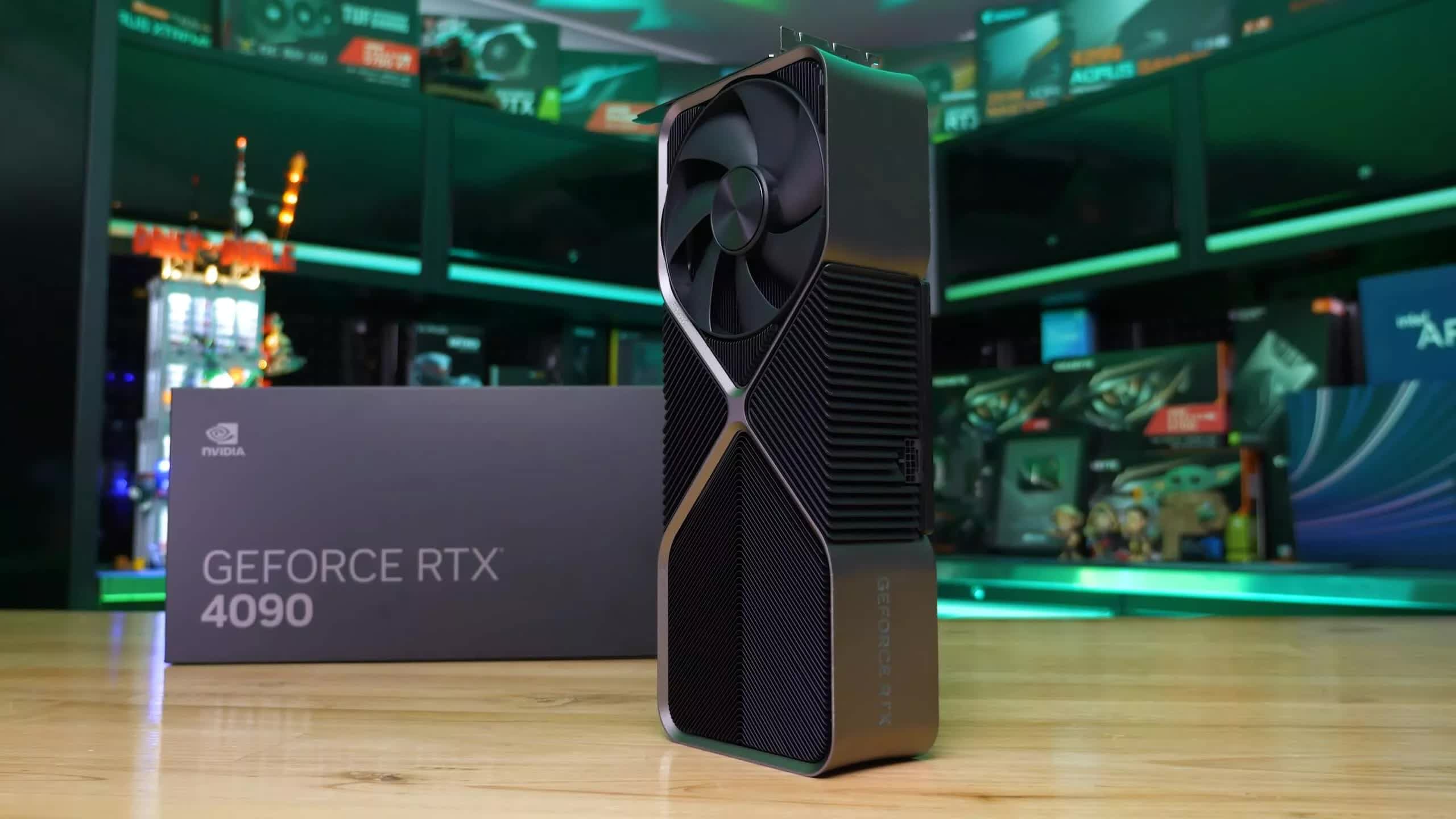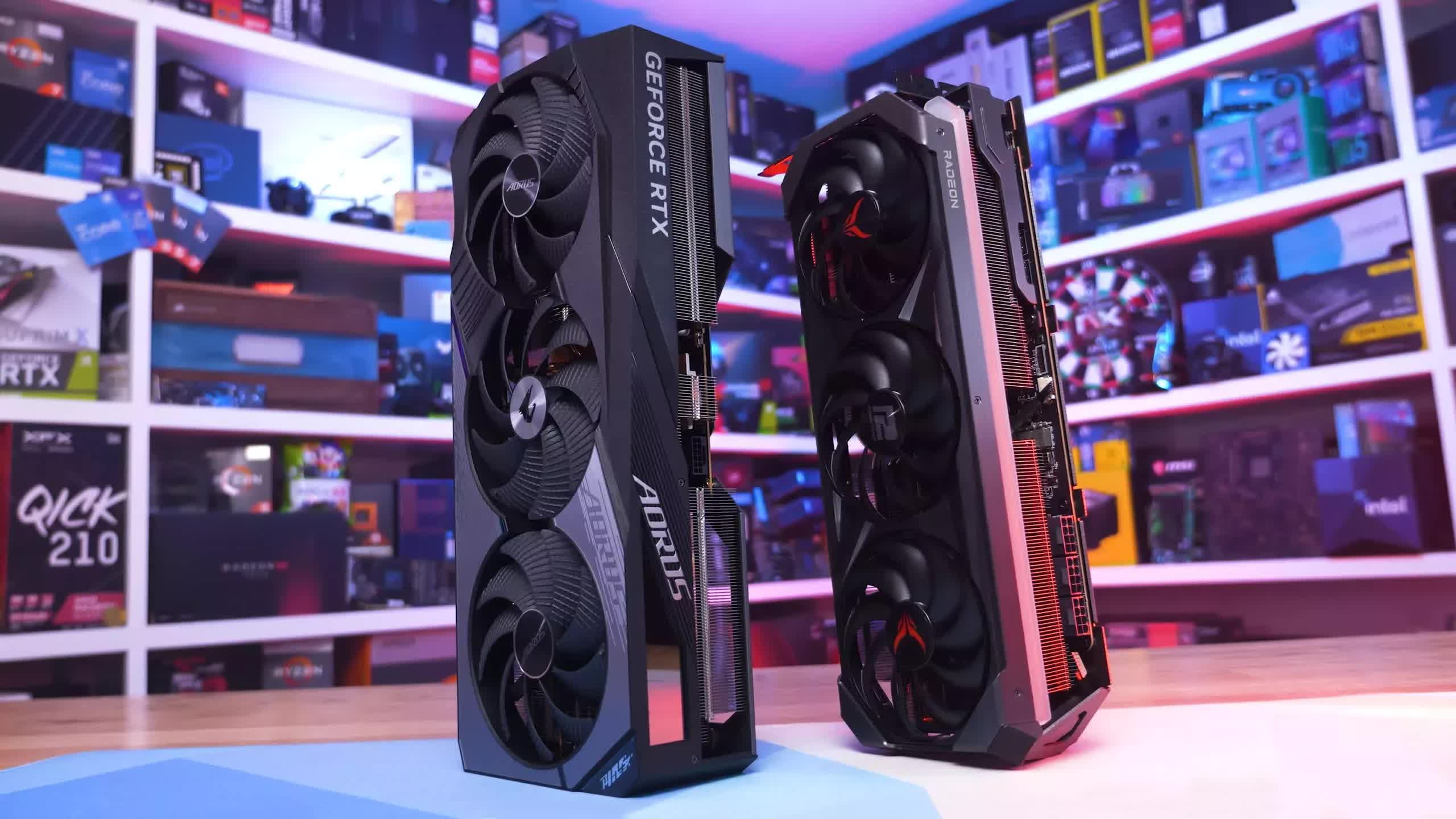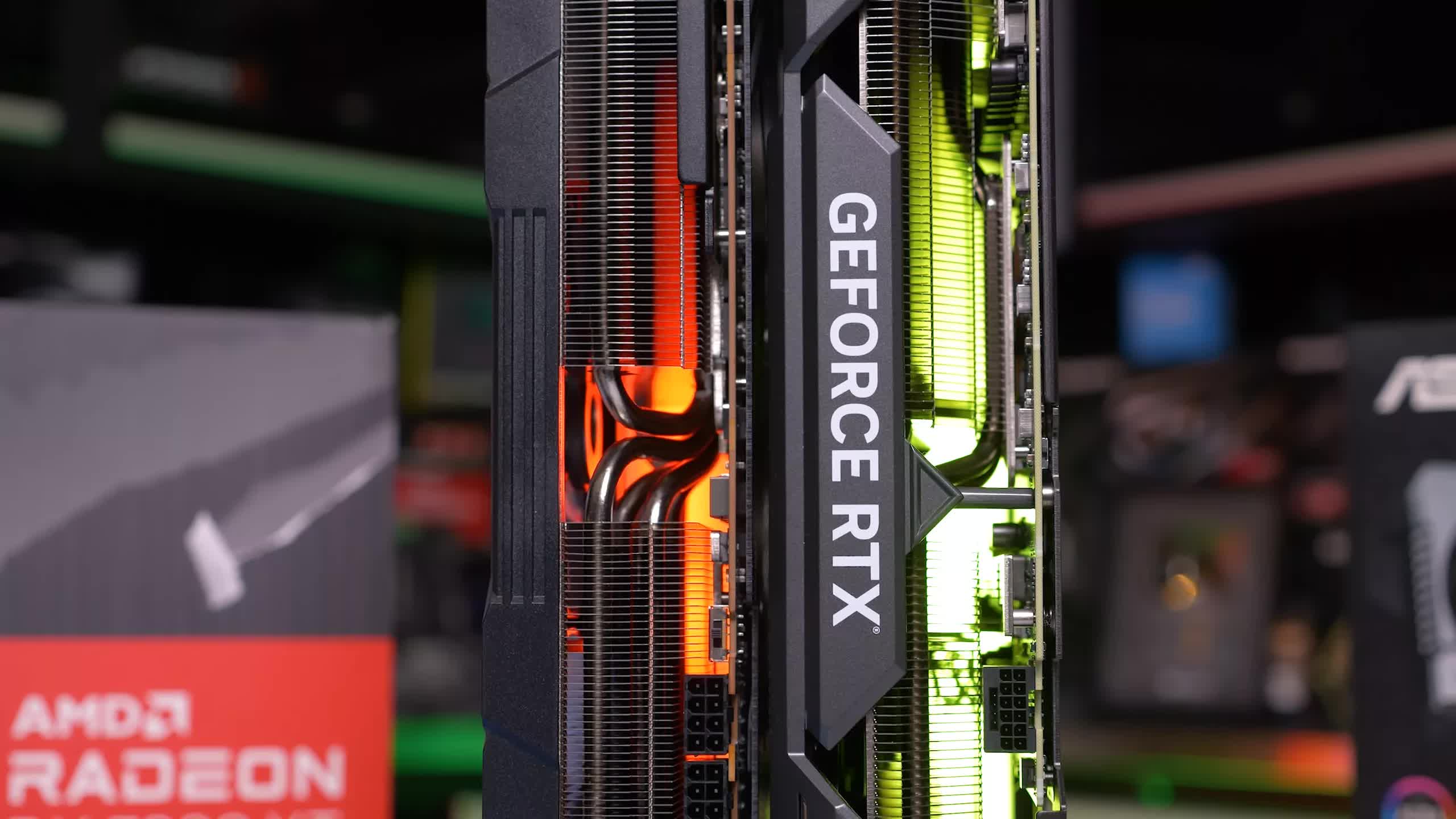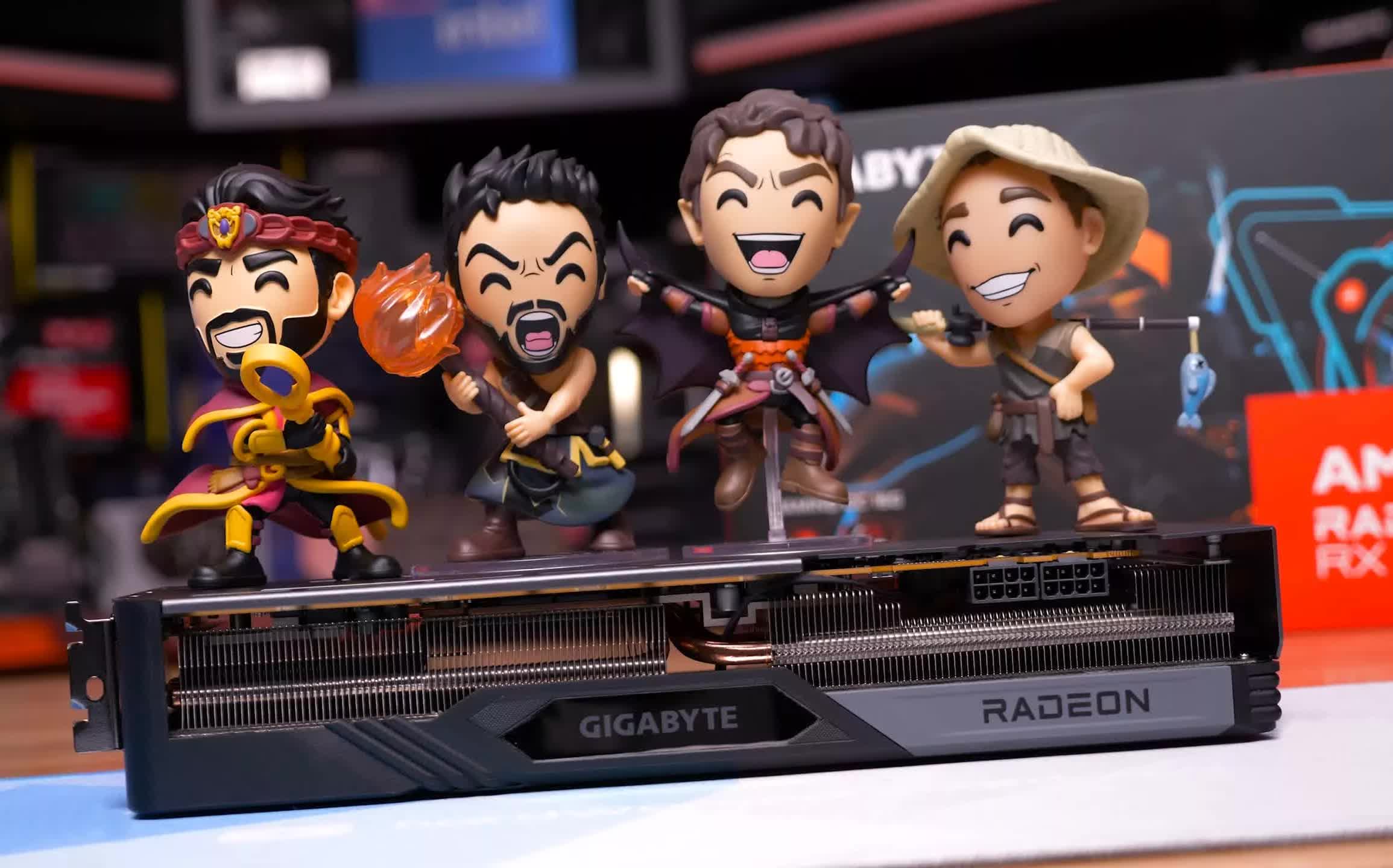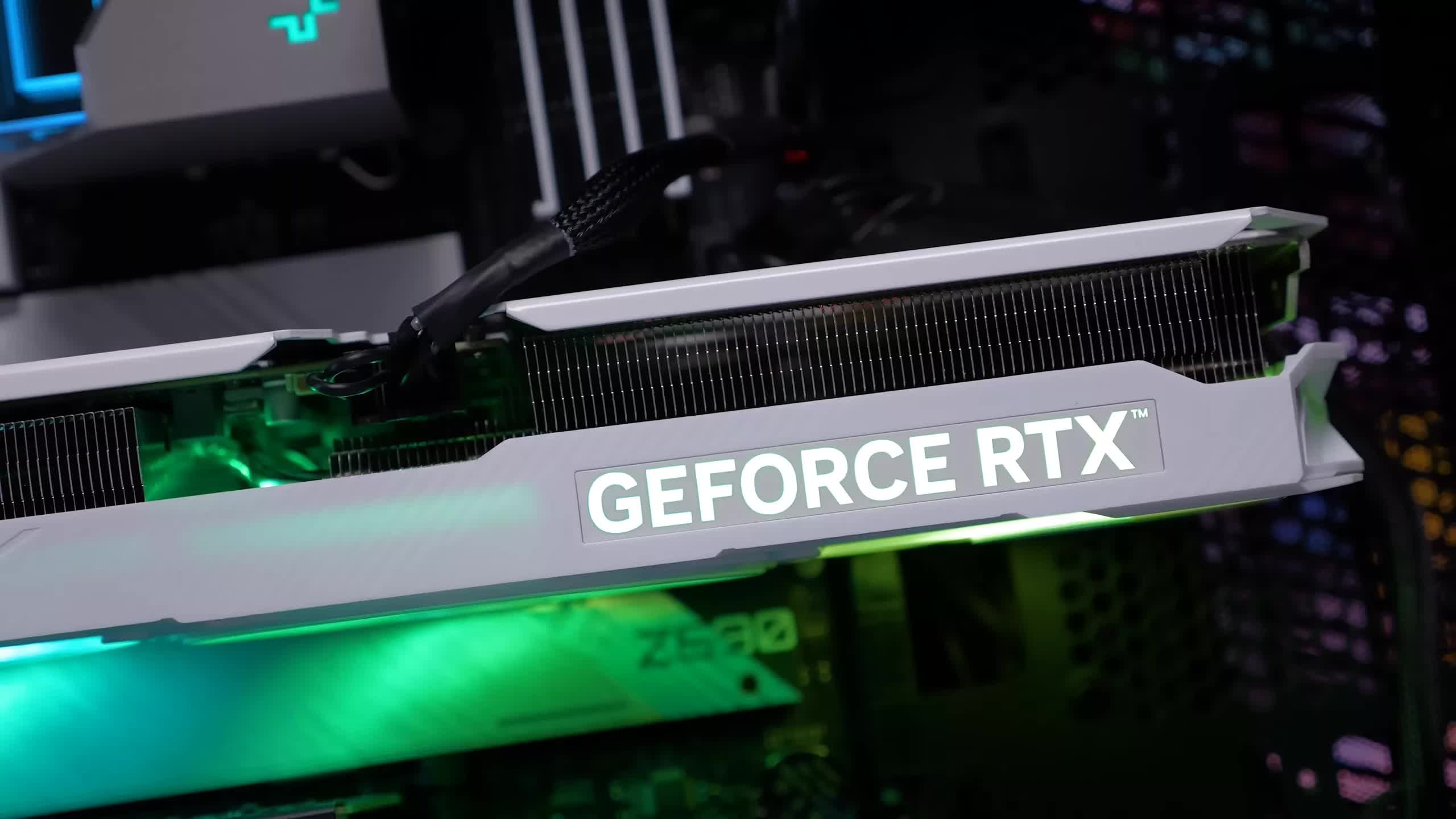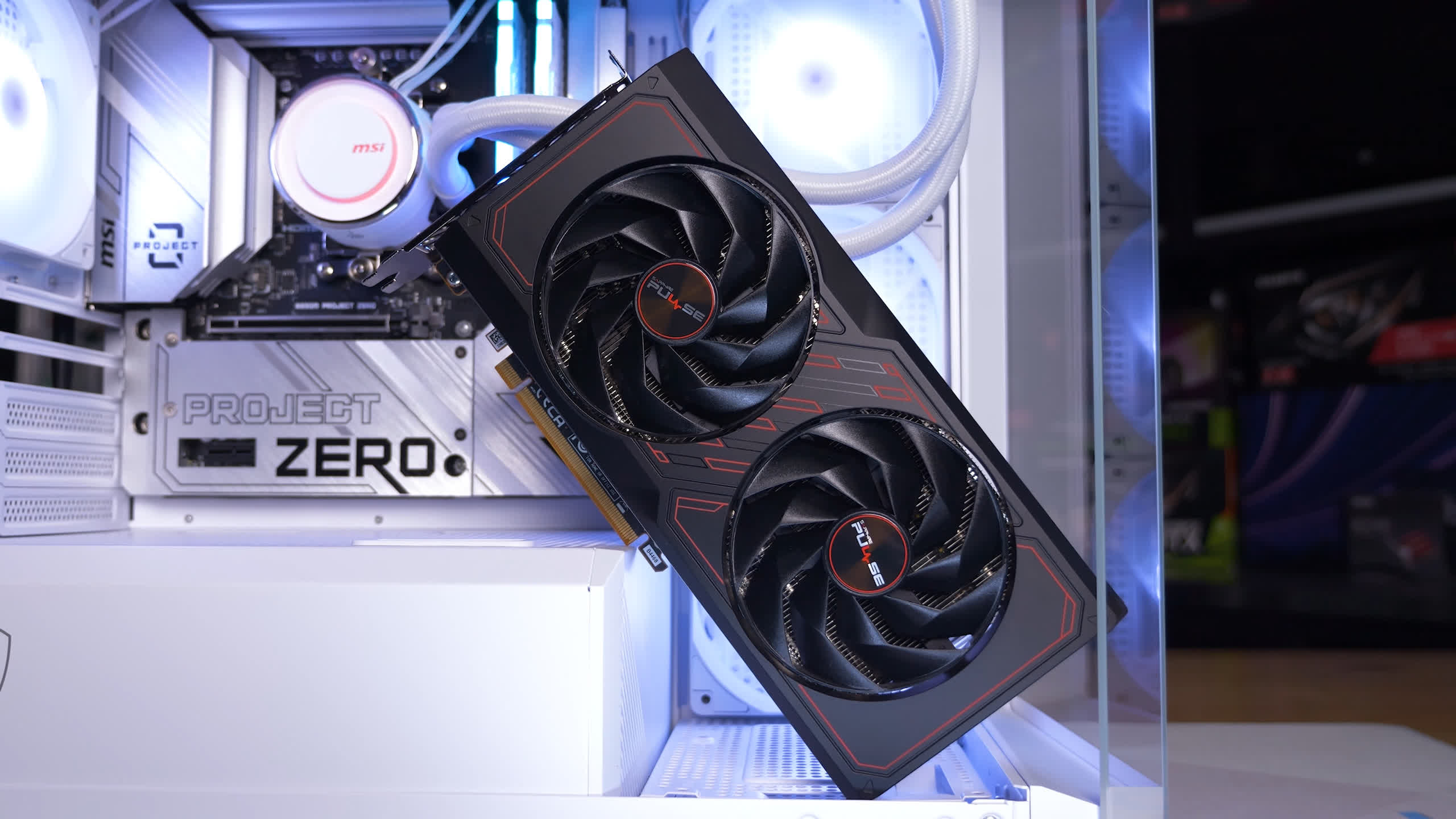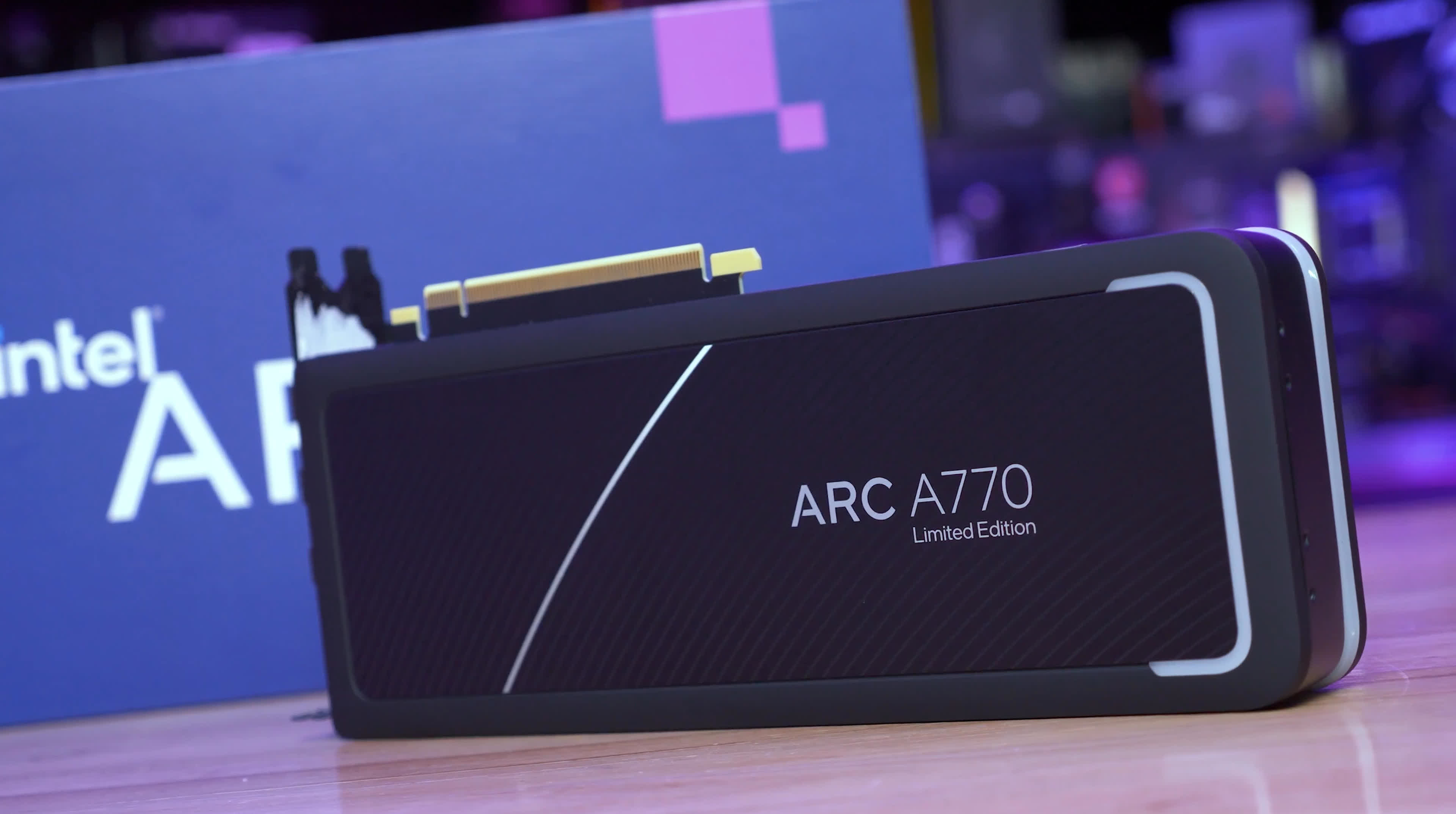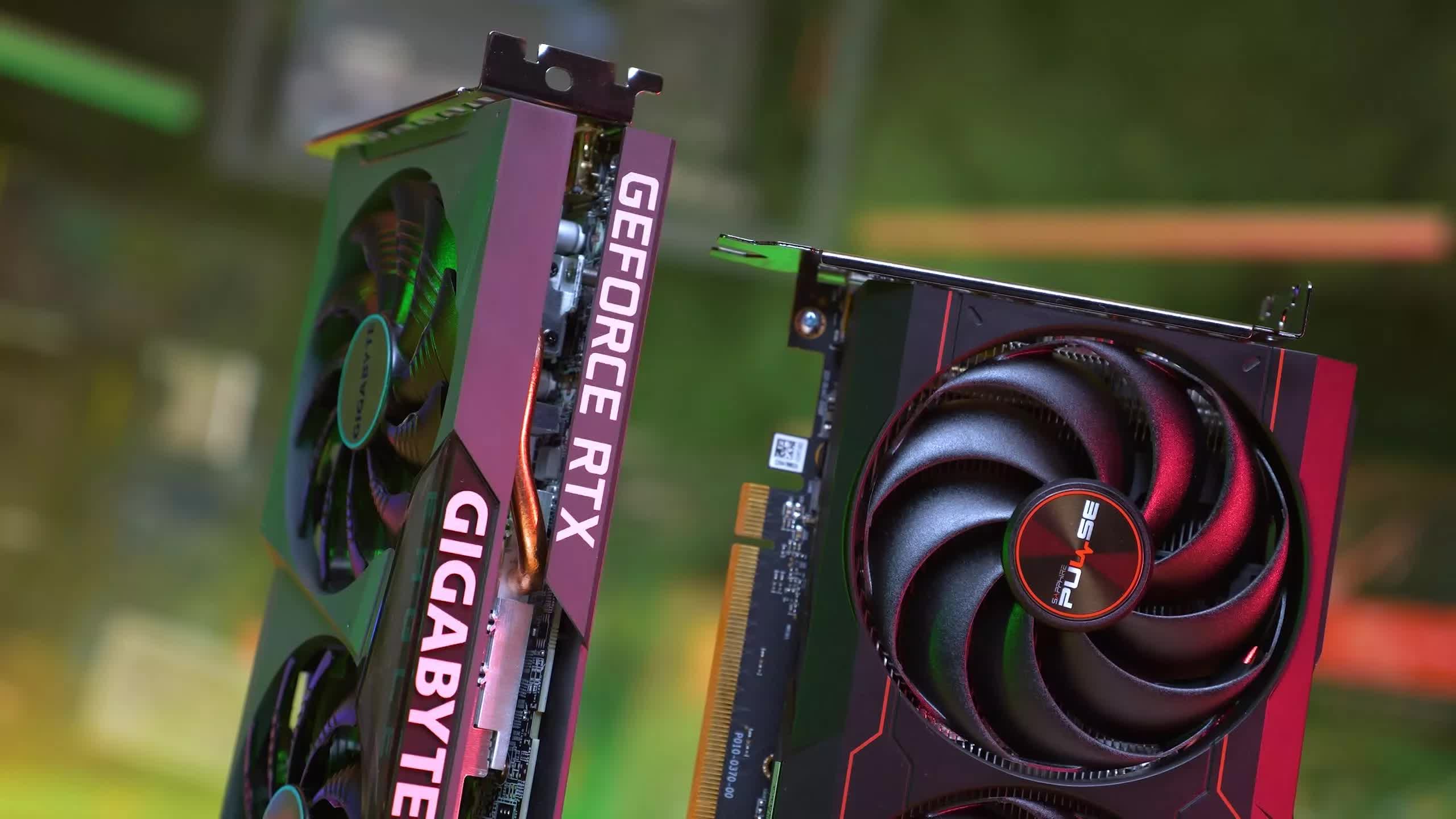Because not much has been going on in the gaming GPU market, we decided that for this month’s GPU pricing update, it was probably a good idea to look at current prices and discuss the best graphics cards you can buy. In a recent feature and analysis, we looked at pricing trends over the last few years to assess what this generation’s graphics cards should have been priced at, and unfortunately today we have to deal with the reality of the market and what’s been served up.
Before looking at the best GPUs, just a quick update on the graphics cards that launched between our last update and now. The Radeon RX 7900 GRE was a bit of a weird re-release, though AMD did bring pricing down to $550. There wasn’t a lot of fanfare for this launch, nor a ton of interest, though you can buy one right now at the MSRP if you want to.
Another product that we’ll soon review in full is the GeForce RTX 3050 6GB, a cut down version of the RTX 3050 that sees not only a reduction in VRAM capacity, but also significant reductions in core count. Being from an older generation, the actual news is the retail pricing settling at around $180.
Best Flagship GPU: RTX 4090
Looking at GPU pricing, the best high-end graphics card on the market is undoubtedly the GeForce RTX 4090, mostly because it faces little to no competition. A few months ago, this product was priced around $2,000, but it has since dropped to $1,820, still a $220 premium above its MSRP. Pricing is trending down, so now might not be the best time to purchase one, yet it remains at the top in terms of performance today.
Obviously, being a halo product, the RTX 4090 does not offer great value. It’s around 32% faster than the RTX 4080 Super, which we can purchase right now for the $1,000 MSRP, making the 4090 over 80% more expensive. Not a significant concern if you have plenty of money to spend on a premium gaming graphics card, but typically, the 4080 Super is a more sensible choice.
$1,000 Battle: RTX 4080 Super, Radeon 7900 XTX
Around the $1,000 mark, we have the Nvidia Super GPU that effectively replaces the original 4080 model, alongside the Radeon RX 7900 XTX at $910. The Radeon is typically ~10% faster in rasterized games, and 24% slower for ray traced games, based on our latest data. This puts it in an interesting position where the best GPU for you may depend on how you value ray tracing.
The RTX 4080 Super is better value for ray tracing, offering 18% better cost per frame, but the 7900 XTX is about 20% better cost per frame for rasterization. There’s reasons to go either way, but with a superior feature set, the RTX 4080 Super is generally the better choice.
$700-800 GPU: RTX 4070 Ti Super, RTX 4070 Ti, Radeon 7900 XT
In the next tier down, we have the GeForce RTX 4070 Ti Super, maintaining its price tag of $800; the RTX 4070 Ti, which is still available at a new low of $680, along with the Radeon RX 7900 XT at $700, unchanged in price from last month. Similar to the previous comparison, the best GPU here also depends on how we value the different performance metrics along with features.
When discussing rasterization, the Radeon 7900 XT offers the best value and is also the fastest: 7% better than the 4070 Ti Super and 17% better than the 4070 Ti. At a similar price to the 4070 Ti, it’s the clear choice if we believe rasterization is most important. However, when it comes to ray tracing, the 4070 Ti and Ti Super are much faster, with the base Ti offering 23% more performance on average for $20 less. Meanwhile, the 7900 XT performs more like an RTX 4070 across our ray-traced benchmarks, and a tad worse in path tracing. On the other hand, the 7900 XT boasts much more VRAM at 20GB versus the paltry 12GB offered, which is unacceptable on a $700 product.
With 4070 Tis still available, they present reasonable value against the 4070 Ti Super: the Ti Super is less than 10% faster but costs 18% more right now, though it does come with a more acceptable 16GB of VRAM, which might be handy in a few years. Honestly, we think all of these models are appropriately priced, and the decision could go either way: the Ti Super is the most well-rounded product but with the highest price tag, the 7900 XT offers good value for rasterization, and the 4070 Ti is competitive at $120 below its MSRP.
$500-600 GPU: RTX 4070 Super, RTX 4070, Radeon 7900 GRE, Radeon 7800 XT
In the upper mid-range, we have four products between $500 and $600. The RTX 4070 Super still sits at $590, the recently released RX 7900 GRE at $550, the discounted RTX 4070, which these days is just $525, as well as the RX 7800 XT, which is a touch under $500 at $490.
In terms of cost per frame value, once again, it depends on rasterization versus ray tracing. The Radeon RX 7800 XT is clearly the best value for rasterization: 7% better than the 7900 GRE and 14% better than the 4070 Super. The 4070 Super is typically the fastest GPU but also the most expensive in this range, and it’s only 9% faster than the 7800 XT for rasterization. The 7900 GRE simply isn’t cheap enough at current prices.
With superior ray tracing performance, this flips, and now the RTX 4070 Super is the best buy, though it’s only slightly ahead of the 4070. In our 10-game sample, we had the 4070 Super offering 15% more performance for a 12% price premium based on current prices, so the decision mostly comes down to whether you want to pay $590 or $525, as you get corresponding levels of performance.
This also applies in general to the battle between AMD and Nvidia. Around $600, we’re most tempted by the RTX 4070 Super, but at $500, the 7800 XT makes a strong case for itself. With that said, we could easily be convinced to spend the extra $35 on the RTX 4070 to gain access to faster ray tracing and Nvidia’s superior feature set while only sacrificing around 10% in rasterization performance. The 7800 XT was more attractive compared to the 4070 when it launched because it was $100 cheaper than the Nvidia alternative, but with that gap shrinking to just $35, it has allowed Nvidia’s offering to become much more appealing.
$400-500 GPU: RTX 4060 Ti, Radeon 7700 XT
The next battle as we move down the product stack is the GeForce RTX 4060 Ti versus the Radeon RX 7700 XT. The 4060 Ti is currently priced at $450 for the 16GB model and $390 for the 8GB model, more expensive than we saw last month. Meanwhile, the 7700 XT has hit a new low price point of just $410, which shakes things up a bit here.
The 7700 XT is clearly faster for rasterization, offering 17% more performance at 1440p, and its 12GB of VRAM is adequate at this price. The 4060 Ti 8GB model is difficult to recommend at $390 due to its limited amount of VRAM, which leads to limitations in some modern games, leaving the 16GB variant as the only legitimate contender. With current pricing in mind, we find it difficult to justify the 4060 Ti 16GB as it’s 10% more expensive and slower, though for ray tracing, it’s much faster, so if you value ray tracing, get the GeForce GPU.
The spanner in the works here that complicates things a bit is the continued availability of the Radeon RX 6800 at just $400. The 6800 offers similar performance to the 7700 XT but gives you an extra 4GB of VRAM to match the 4060 Ti 16GB, and costs $10 less. Power efficiency is similar between the two models, though the 6800 lacks AV1 encoding. For a rasterization-focused buyer, we’d choose the RX 6800 over the 7700 XT while it’s still available at that price difference.
$350 GPU: Radeon 7600 XT, Radeon 6750 XT
At around $350, there are two main choices: the RX 7600 XT at $325 or buying one of the last remaining RX 6750 XTs at $340. Lurking in the shadows for Nvidia buyers are the cheaper but slower RTX 3060 and RTX 4060.
Between the two AMD models, it’s a no brainer. The RX 6750 XT is nearly 20% faster than the 7600 XT while costing just $15 more and still offers 12GB of VRAM, which is largely sufficient here, though not quite as future-proof as the 16GB 7600 XT. However, we don’t expect 6750 XTs to last much longer, as the similar 6700 XT has already sold out in most locations.
Mainstream $250-300 GPU: RTX 4060, Radeon 7600, Intel Arc A770
In the mainstream market, there’s a bit of competition. The RTX 4060 at $295, the RX 7600 at $260, and the Intel Arc A770 16GB at $280 make up the current generation offerings, while the $240 6650 XT, $230 6600 XT, and $280 RTX 3060 12GB are also all still available from the previous generation.
There are a couple of things to consider. Firstly, on raw rasterization performance and value, the RX 7600 and RX 6650 XT offer the outright best cost per frame, with the 7600 being slightly faster and slightly more expensive. There isn’t much difference in power consumption, but the RX 7600 offers AV1 encoding, so generally at these prices, we’d choose the RX 7600.
The RX 7600 offers slightly better rasterization performance for $35 less than the RTX 4060, and we don’t think ray tracing performance is overly relevant here as the 4060 is not very capable of ray tracing. Though the usual advice remains, if you value ray tracing, opt for the GeForce product.
A bigger factor for us could be upscaling, as DLSS is much better than FSR at upscaling at lower resolutions like 1080p and 1440p, which would be the typical resolutions to pair with this class of product. That could be enough to justify the GeForce GPU’s 13% premium even if it means sacrificing a few frames, but it’s not a clear choice, especially as even DLSS isn’t that great at 1080p.
But if you are considering the RTX 4060, we’d suggest getting the RTX 3060 12GB instead. It’s slightly slower and slightly cheaper, meaning a similar cost per frame but packs 12GB of VRAM instead of 8GB, which will have better longevity and ability to play newer games at higher texture quality settings. The trade-off here is the RTX 3060 lacks DLSS frame generation, but at this price point, we’d take the extra VRAM over frame generation. We could also see the extra VRAM of the 3060 being a reason to choose it over the RX 7600.
Also up for consideration is the Intel Arc A770 16GB, which has the most VRAM of any mainstream GPU if that’s something you value. Performance is typically similar to that of the RX 7600, at the expense of much higher power consumption. Arc GPUs also have more variable performance due to their newer and less widely optimized drivers; some games work great, others don’t, which is not ideal for gamers playing a wide variety of titles, especially if you like playing on day 1 of release. At $280, we’re not convinced the value is there.
Entry-Level GPU ($200 or less): Radeon 6600, RTX 3050
For entry-level gamers, the choice is simple and has been so for quite a while now. We recommend getting the Radeon RX 6600 for just $190 as it continues to offer the best overall value. It’s significantly faster than the GeForce RTX 3050 8GB, which these days is hard to find and typically costs over $300. The 3050 has always offered poor value. It’s also about 50% faster than the RTX 3050 6GB for just $20 more, making it a clear choice in our opinion.
The Intel Arc A750 and A580 are also around this price range, with the A750 costing $210 and the A580 at $165. The A750 is generally about 10% faster than the RX 6600 and costs 10% more, but, similar to the A770 versus RX 7600, performance can be variable depending on the games you’re interested in. The RX 6600 is the more reliable product. The A580 also doesn’t really stand out at this price, offering similar cost per frame to the RX 6600.
GPU Pricing Trends
If you want to consider pricing trends when buying, here’s a look at the overall market. Nvidia’s RTX 40 series has been relatively consistent over the past few months. The 4070 Ti hit a new low, the 4080 Super is back to its MSRP, but the 4060 Ti series saw a slight increase in price. There’s nothing significantly different from what we’ve seen in previous months, and we wouldn’t expect much price movement, as most of the recent changes have been due to Nvidia’s introduction of the Super series.
| MSRP | Lowest Price Jan | Lowest Price Feb | Lowest Price Mar | Current Price Inflation | Change Last Month | |
|---|---|---|---|---|---|---|
| GeForce RTX 4090 | $1,600 | $2,000 | $1,900 | $1,820 | 14% | -4% |
| GeForce RTX 4080 Super | $1,000 | $1,050 | $1,000 | 0% | -5% | |
| GeForce RTX 4080 | $1,200 | $1,180 | $1,200 | $1,100 | -8% | -8% |
| GeForce RTX 4070 Ti Super | $800 | $800 | $800 | $800 | 0% | 0% |
| GeForce RTX 4070 Ti | $800 | $750 | $700 | $680 | -15% | -3% |
| GeForce RTX 4070 | $600 | $600 | $590 | $590 | -2% | 0% |
| GeForce RTX 4070 Super | $550 | $535 | $530 | $525 | -5% | -1% |
| GeForce RTX 4060 Ti 16GB | $500 | $440 | $430 | $450 | -10% | 5% |
| GeForce RTX 4060 Ti 8GB | $400 | $385 | $375 | $390 | -3% | 4% |
| GeForce RTX 4060 | $300 | $295 | $290 | $295 | -2% | 2% |
| Average | -3% | -1% |
The Radeon 7000 series has slowly dropped in price for most models, with many sitting at historical lows, though only by a few dollars. The biggest movers have been the 7900 XTX, now $40 cheaper than a few months ago, the 7700 XT, which has also dropped to $410, and the 7900 XT, now reliably a $700 GPU. However, we wouldn’t be expecting many changes in the next few months.
| MSRP | Lowest Price Jan | Lowest Price Feb | Lowest Price Mar | Current Price Inflation | Change Last Month | |
|---|---|---|---|---|---|---|
| Radeon RX 7900 XTX | $1,000 | $950 | $920 | $910 | -9% | -1% |
| Radeon RX 7900 XT | $900 | $740 | $700 | $700 | -22% | 0% |
| Radeon RX 7900 GRE | $550 | $550 | 0% | – | ||
| Radeon RX 7800 XT | $500 | $500 | $490 | $490 | -2% | 0% |
| Radeon RX 7700 XT | $450 | $440 | $430 | $410 | -4% | -5% |
| Radeon RX 7600 XT | $330 | $330 | $330 | $325 | 0% | -2% |
| Radeon RX 7600 | $270 | $260 | $260 | $260 | -4% | 0% |
| Average | -7% | -1% |
Intel’s Arc GPUs tend to fluctuate a bit, but there’s been no pricing changes this month, and only the A580 is at a historical low right now. Supply for the GeForce 30 series is nearly exhausted, so we wouldn’t bother considering most models, outside of the RTX 3060, and a similar statement can be made for the Radeon 6000 series. The RX 6600 seems to be in the strongest supply, with plenty of models still available, but if you want cards like an RX 6800, RX 6750 XT, or RX 6650 XT, we recommend buying sooner rather than later as supply is finally drying up.
| MSRP | Lowest Price Jan | Lowest Price Feb | Lowest Price Mar | Current Price Inflation | Change Last Month | |
|---|---|---|---|---|---|---|
| Intel Arc A770 16GB | $350 | $300 | $290 | $280 | -20% | -3% |
| Intel Arc A770 8GB | $320 | No stock | No stock | No stock | ||
| Intel Arc A750 | $290 | $190 | $205 | $210 | -28% | 2% |
| Intel Arc A580 | $180 | $180 | $165 | $165 | -8% | 0% |
| Intel Arc A380 | $140 | $120 | $120 | $110 | -21% | -8% |
| Average | -19% | -2% |
That’s where the GPU market stands at the moment and the products that are the best buys. There are few standout buys, but also few absolute stinkers. Most GPUs are currently positioned to offer value to certain subsets of buyers. Radeon is typically competitive for rasterization performance, while GeForce looks good for ray tracing and features. Both brands have adjusted pricing to ensure there are no extreme outliers for the most part.
In general, the GPU market is not particularly interesting right now, and despite there being some products that offer better value than others, we don’t think any of these GPUs qualify as “excellent deals” – something we looked at a week ago. When talking about the best GPUs, we’re more focused on individuals set on buying something right now and wanting to know the best options.
As we approach a new GPU generation that will probably start to launch around the end of this year or early next, we may eventually need to decide whether to buy or wait. For high-end buyers, it will soon make more sense to wait for products like the RTX 5090 and 5080 that will launch first. However, if you’re a mid-range shopper (especially if you’re interested in next-gen GeForce models), it could be well over a year of waiting before we can see what’s in store. It’s something to keep in mind and, as always, will depend on your urgency for an upgrade, what you are currently using, and the games you want to play.
Shopping Shortcuts:
Source link
